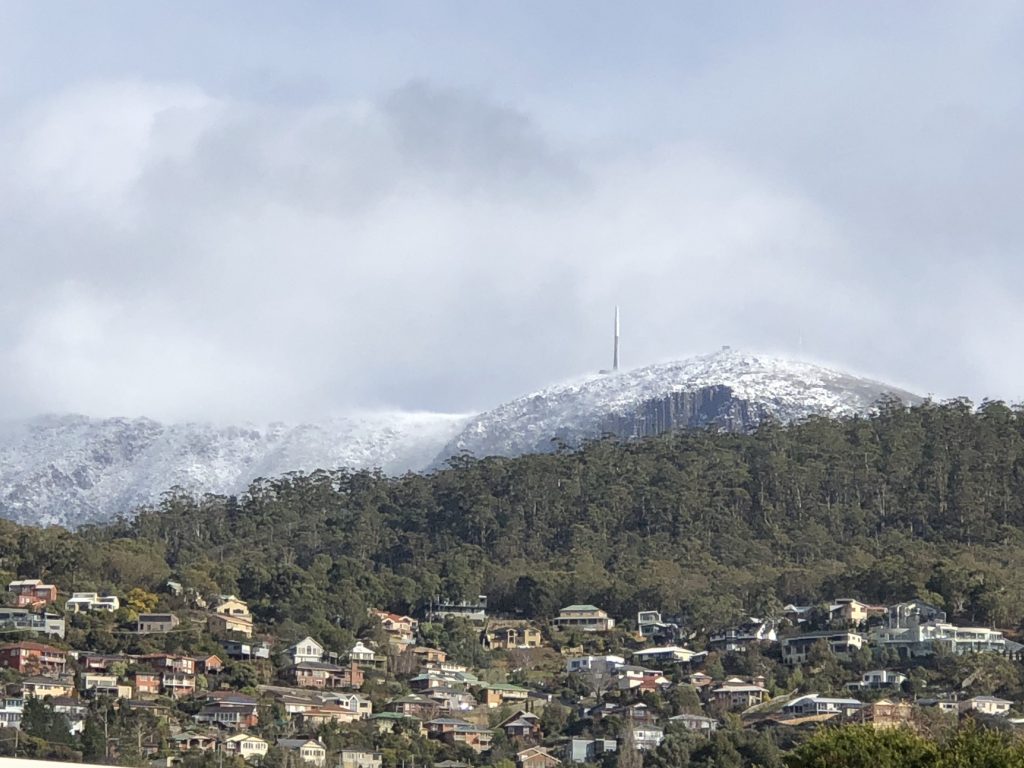So now we’ve got our nice big shiny new red-and-white Antarctic icebreaker, the Nuyina. It’s pronounced noy-yee-nah, and means ‘southern lights’ in palawa kani, the reconstructed language of the Tasmanian aboriginal peoples. It’s a nice exercise in cultural continuity as well as inclusiveness, given the name of its venerable predecessor meant the same thing in Latin: Aurora Australis.
It’s a good name. It was chosen in a nationwide competition that attracted entries from over 800 Australian schoolchildren. St Virgils boy Haidar Alnassar shared the honours with students from a Perth primary school. Aussie schoolkids have a history of coming up with the goods in matters like these. It was 14-year-old Melbourne schoolboy Ivor Evans who came up with the design for our national flag in 1901. Or, to be strictly accurate, he shared the £200 prize with four others who submitted identical designs, one of whom was also a teenage boy. The prize would have been worth $25,000 today. The Aussie kids who came up with Nuyina were given a flight from Hobart to Wilkins aerodrome in Antarctica, which would probably be about the same value in monetary terms, but they also became the first children to set foot in Antarctica. Can’t put a price on that!

The bestowing of official names these days can be a vexed business, what with increased sensitivity about the colonial impact on indigenous culture. I’ve always thought a good rule of thumb is to let natural features keep their indigenous names, if they have them, and let post-colonial add-ons like buildings, bridges, streets, towns and cities be named by those who built them or paid for them.
The classic example of this policy operating with cultural clarity and common sense, is in the names of what we used to call Ayers Rock and the Olgas. Both were named by European explorers after people who never even went there. Sir Henry Ayers was a South Australian bureaucrat and Olga was the Queen of Wurttemberg in Germany, for heaven’s sake.
The local Anangu people had been calling Ayers Rock ‘Uluru’ and the Olgas ‘Kata Tjuta’ for thousands of years, and still do. ‘Kata Tjuta’ means ‘many heads’, but ‘Uluru’ is an Anangu place name with no English translation. They have been officially renamed under the dual naming system, with the indigenous name first. I think there’s a strong argument for dropping the European names altogether in favour of the ancient names given by the people who saw them first.
The situation is not so straightforward in Tasmania, where the use of local languages was interrupted or lost in the aftermath of European colonization. Only a handful of places in Tasmania still bear their original names, although in English spellings which do not convey the original sounds – Triabunna is one. Through the retrieval process used by the palawa kani project it’s now rendered ‘trayapana’ on the indigenous place names map, although I couldn’t find anything resembling Boobialla or Ringarooma, which they say are also the original names for those localities.
In the case of Nuyina, there’s no problem. Local aborigines shared this name for the southern lights with George Augustus Robinson, who made great efforts to record the words used by the indigenous peoples. So did other colonial Europeans, and much of the palawa kani revival is based on these sources.
The names ‘nipaluna’ for Hobart and ‘kunanyi’ for Mt Wellington have come from this project. According to my rule of thumb Hobart should stay Hobart and Mt Wellington should become simply kunanyi, a local word meaning ‘mountain’. But you’ve got to keep everyone happy and the dual naming system seems to be a good compromise.

As for ‘lutruwita’, sometimes used now for the island of Tasmania, Robinson got this name from local people on Bruny Island pointing to the mainland. It’s unlikely they had any sense of the name applying to the island of Tasmania as a whole, but I suppose you could ask why it should be named after a Dutch explorer who popped in a few hundred years ago.
To further confound my rule of thumb about natural features vs built structures, there are hundreds of Australian towns that bear aboriginal names, our capital city Canberra – ‘meeting place’ – being one. Names like Wolloomolloo, Wollongong, Geelong, Corryong and Corio are so much more distinctive and interesting than all those Victorias, Richmonds, Kingstons and Carltons, of which there are too many. More on this in a future column.



